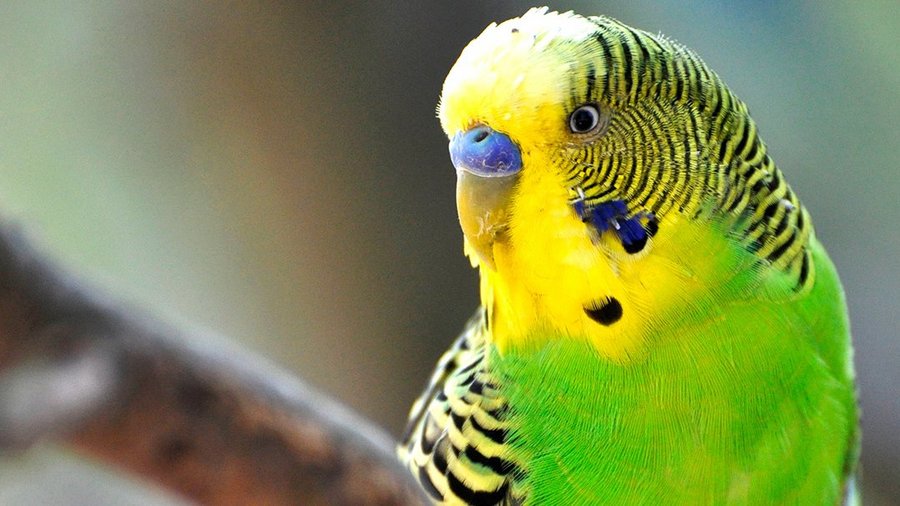Interesting places to perch
With natural branches as perches, you kill two birds with one stone. On one hand, you ensure healthy bird feet. On the other hand, your feathered companions have something to “nibble” on. Conventional perches usually all have the same diameter. However, in nature, birds sit on branches of varying thickness. Ideally, the toes should not interlock. Instead, the claws should rest on the wood. If you collect wood in nature, then best from hazel, a fruit tree, or beech. They are completely harmless and non-toxic. You can leave the blossoms, buds, and leaves on them. Your birds will not only enthusiastically climb through the wood but also examine everything with their beaks. Important: Do not replace all the sticks at once but rather one after the other. Otherwise, your feathered friend might get spooked.
Rocking brings movement into the cage
An astonishing number of birds love rocking. These include budgies and zebra finches. It’s no wonder. After all, it’s the most natural thing in the world for branches or stalks to sway. Swings are quite easy to make yourself. A piece of rope is quickly attached to the cage ceiling using clothes pins or two knots. Also rattan balls dangling from the roof on a stainless steel chain make a nice opportunity to swing. A more sophisticated variation is the “wobble board”. For this, you should provide a flat board with four holes at the corners. Thread ropes through the holes, and secure them with a knot. You can then simply hang the wobble board over a perch. Rocking rings are also particularly pretty. Learn how to make your own in our DIY tutorial for an attractive cork swing.
Install PDF download: Vitakraft_DIY_building_instructions_bird_swing.pdf.
Obtain natural nesting material
For many species of birds that like to sleep in nests, it’s a favourite hobby to constantly tinker with their roosts. For example, a sisal cord is persistently broken down into its component parts, or tissues are shredded down to the last fibre. Give them a treat, and provide additional nesting material. Suitable materials include feathers, blades of grass, short coconut fibres, short-cut natural bast, short-cut hay, or chopped straw. However, if in doubt, always make sure to clean natural materials before using them so that possible parasites do not enter the bird cage. For a natural atmosphere, we recommend our Country Home Forest Floor. This is not only completely made of natural materials but also heat-treated and therefore absolutely safe for birds. You can occasionally clear out the nests and offer something new again.
Explicitly allowed: Playing with food
Like almost all animals, birds spend hours eating in their natural environment. Let your feathered friends work out their food instead of serving it to them in a bite-sized bowl day after day. Our Kräcker® or foxtail millet are a real treat for almost all bird species. These don’t have to hang conveniently from the cage bars. Attach them to the roof of the cage using a clothes-pin or a piece of string hanging freely. This way, your pets can prance around on them whilst happily nibbling. While the grains become increasingly less, the challenge grows. A rattan ball, which you can fill with crumpled cellulose shreds and grains and place on the floor, also works as an activity toy. It could hardly be simpler.
As you can see, there are no limits to your imagination. Just try it around. Wooden balls, rattan balls, cork pieces, and ropes can be combined in any way you like to create a colourful chain. They also look pretty. Branches make a wonderful ladder or suspension bridge. Or maybe you can spur your budgies on to top performance with a simple cardboard roll? Sometimes the simplest things are the most interesting.

